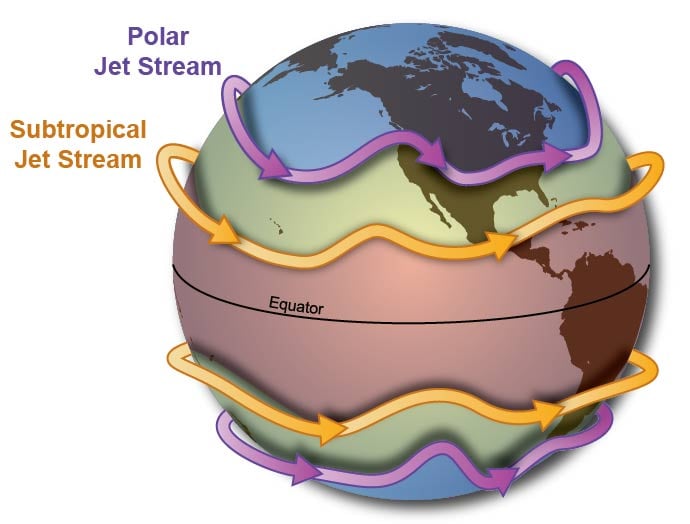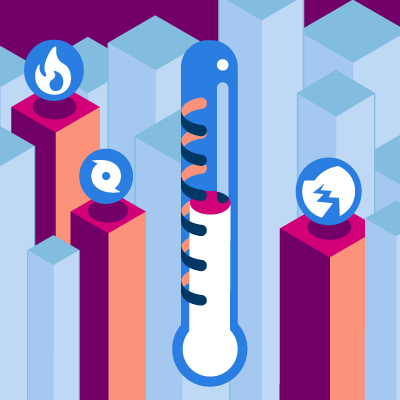An article on how climate change may be impacting the waviness of the jet stream captured my attention recently because, on the surface, it seemed to question some previous claims. The article was published in Science Advances in February 2020 by researchers at the University of Exeter. Using reanalysis data from 1979 to 2018, they found no statistically significant increase in the waviness of the jet stream. In this blog I’ll put the scientific findings surrounding the topic in perspective and explain how they may be connected to the prior results.
Increased Waviness Enhancing Arctic Amplification?
The jet stream exists because of the horizontal temperature gradient between the North Pole and the equator: the steeper the gradient is (the difference between temperatures at the North Pole and the equator), the more energetic the jet stream is and the faster the winds within it. Scientists have stated that as the Earth’s climate continues to warm, Arctic amplification will further reduce this gradient, further reduce the strength of the jet stream, and allow more amplified waves to develop along it, thus increasing its “waviness.” The amplified waves, or this waviness, would increase the transport of warm, moist air poleward and cold, dry air southward, resulting in more extreme weather.

The recent study noted that while there was supporting evidence for the connection between a reduced temperature gradient and jet stream waviness in the first half of the reanalysis period, no correlation was evident in the second half. When the authors looked more carefully at shorter periods within the 40-year reanalysis period, however, the correlation did become evident. But correlation does not mean causation.
Delving deeper, through a time-lagging procedure, the researchers determined that it was not the reduced gradient that was causing the increased waviness, but the opposite: The increased waviness was causing the reduced gradient, which was enhancing Arctic amplification. The authors did not explore the reason for this but credited larger climatic forces.
Rossby Waves
The study’s results don’t actually contradict previous findings or conclusions because, while we know that a reduced gradient will slow the winds within the jet stream, we also know that it will slow the movement of the jet stream itself. The large-scale waves of the jet stream are called Rossby waves. The wavelength of these waves determines how fast the jet moves. Very long Rossby waves can slow the jet stream to the point of stagnation; a stagnant wave pattern allows weather systems to move over the same region again and again—a form of clustering. This is typically how large-scale floods develop—not just from one event over a period of a few days, but from the same kinds of events affecting the same region over a period of months. The Great Flood of 1993, which impacted the Mississippi and Missouri rivers from April to September, is a great example.
A Connecting Theory
Extended heat waves can develop in similar fashion, as weather systems continue to drive hot air northward over the same region, causing the jet stream above to bulge northward—effectively making it wavier. This could explain the time lag, the results, and the conclusions that the University of Exeter study recently reported—and at the same time be consistent with results from previous studies.
So, in an even more indirect way, a reduced pole-to-equator temperature gradient could cause a wavier jet stream—if not over the long haul, then over sporadic episodes. This connecting theory, if validated, could help us further understand how and when extreme events may occur in the future. As climate change continues and as accelerated reductions in temperature gradient occur, they may ultimately spawn clusters of extreme events in temperature, precipitation, and wind.
Read my AIR Current article, “The New Science of Event Attribution”




